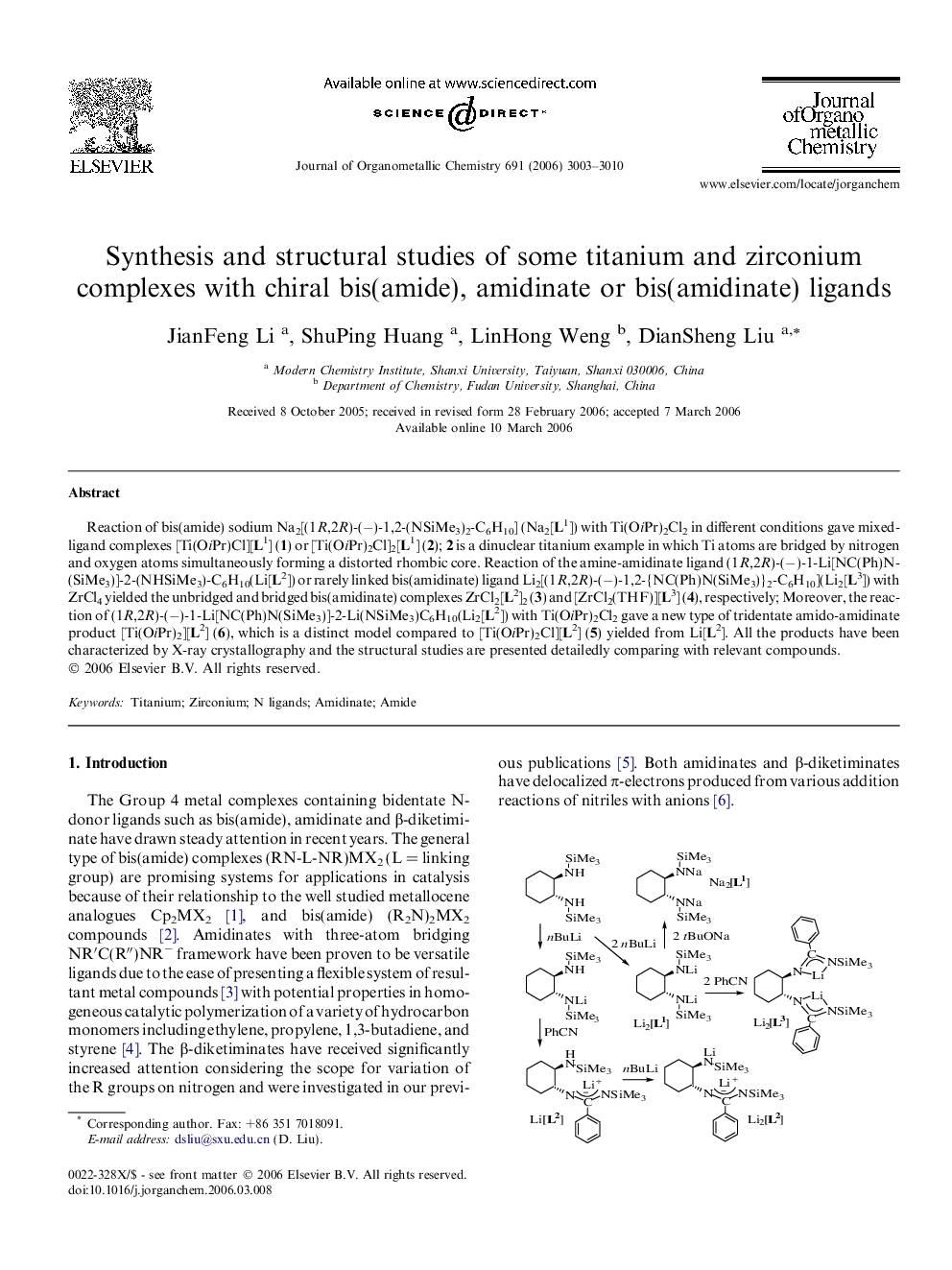| Article ID | Journal | Published Year | Pages | File Type |
|---|---|---|---|---|
| 1327532 | Journal of Organometallic Chemistry | 2006 | 8 Pages |
Reaction of bis(amide) sodium Na2[(1R,2R)-(−)-1,2-(NSiMe3)2-C6H10] (Na2[L1]) with Ti(OiPr)2Cl2 in different conditions gave mixed-ligand complexes [Ti(OiPr)Cl][L1] (1) or [Ti(OiPr)2Cl]2[L1] (2); 2 is a dinuclear titanium example in which Ti atoms are bridged by nitrogen and oxygen atoms simultaneously forming a distorted rhombic core. Reaction of the amine-amidinate ligand (1R,2R)-(−)-1-Li[NC(Ph)N(SiMe3)]-2-(NHSiMe3)-C6H10(Li[L2]) or rarely linked bis(amidinate) ligand Li2[(1R,2R)-(−)-1,2-{NC(Ph)N(SiMe3)}2-C6H10](Li2[L3]) with ZrCl4 yielded the unbridged and bridged bis(amidinate) complexes ZrCl2[L2]2 (3) and [ZrCl2(THF)][L3] (4), respectively; Moreover, the reaction of (1R,2R)-(−)-1-Li[NC(Ph)N(SiMe3)]-2-Li(NSiMe3)C6H10(Li2[L2]) with Ti(OiPr)2Cl2 gave a new type of tridentate amido-amidinate product [Ti(OiPr)2][L2] (6), which is a distinct model compared to [Ti(OiPr)2Cl][L2] (5) yielded from Li[L2]. All the products have been characterized by X-ray crystallography and the structural studies are presented detailedly comparing with relevant compounds.
Graphical abstractSome new results of Group 4 metal complexes liganded by bis(amide), amine-amidinate, amido-amidinate, unbridged and bridged bis(amidinate) are reported. Their synthesis methods and characterization are described. Structural studies show some new features and detailed comprehension is given by comparing with relevant compounds.Figure optionsDownload full-size imageDownload as PowerPoint slide
